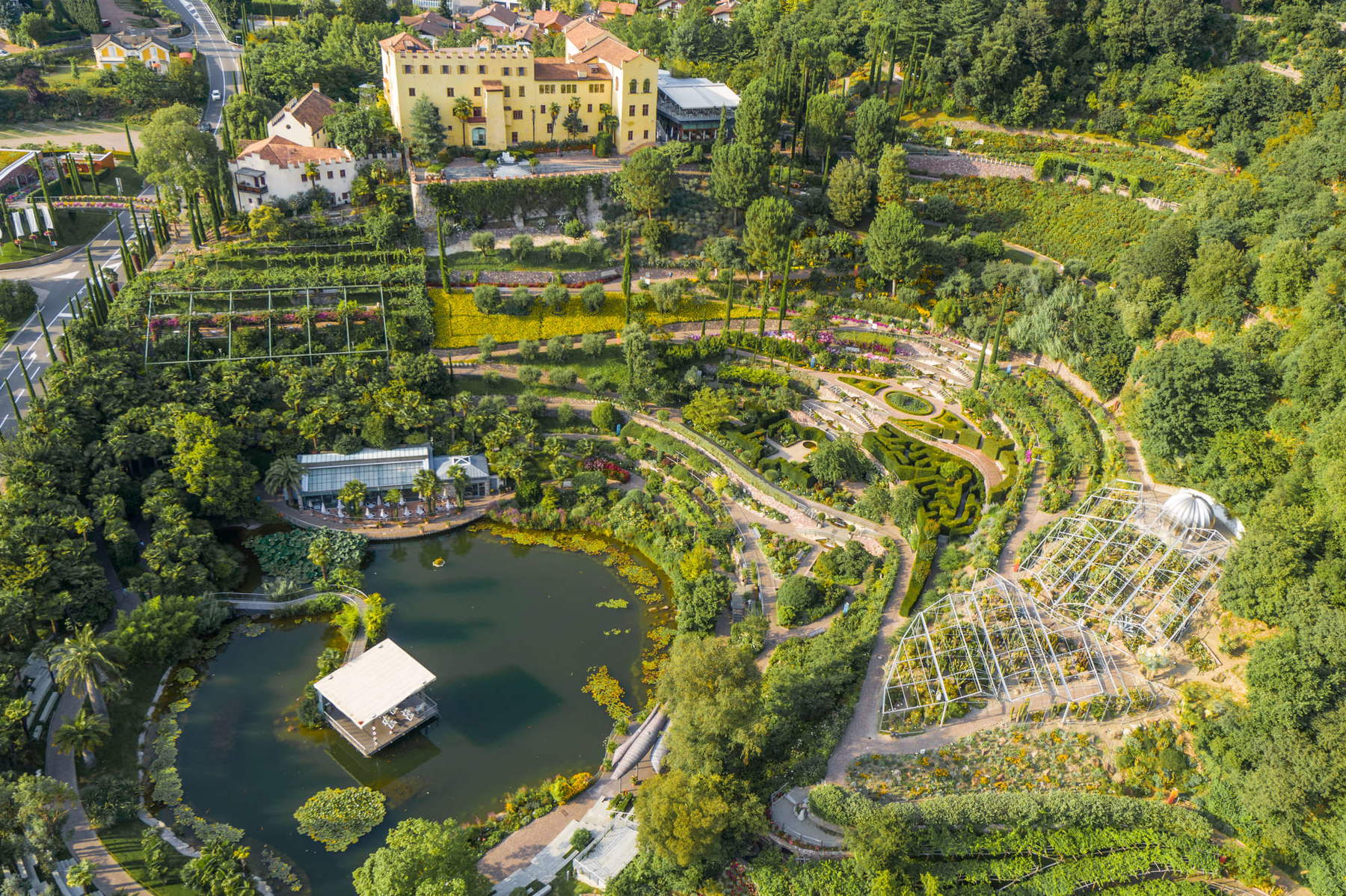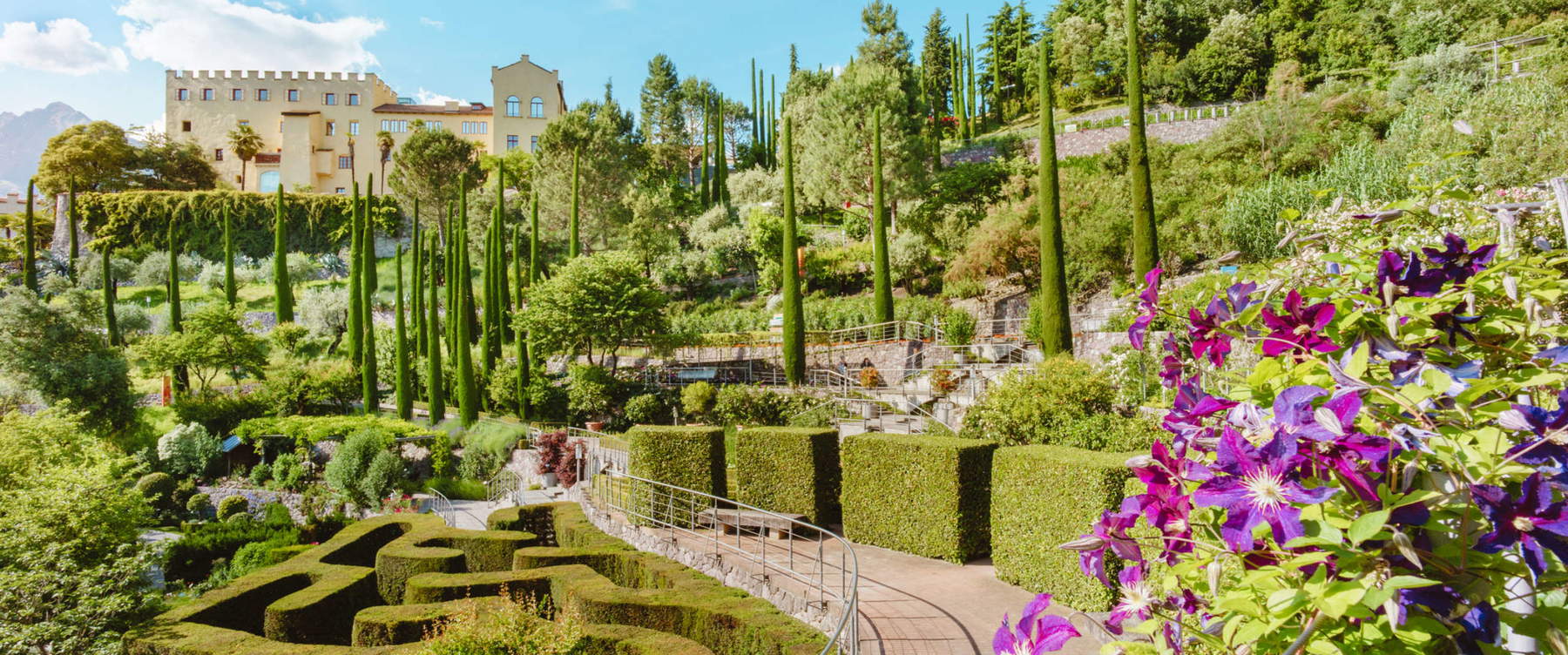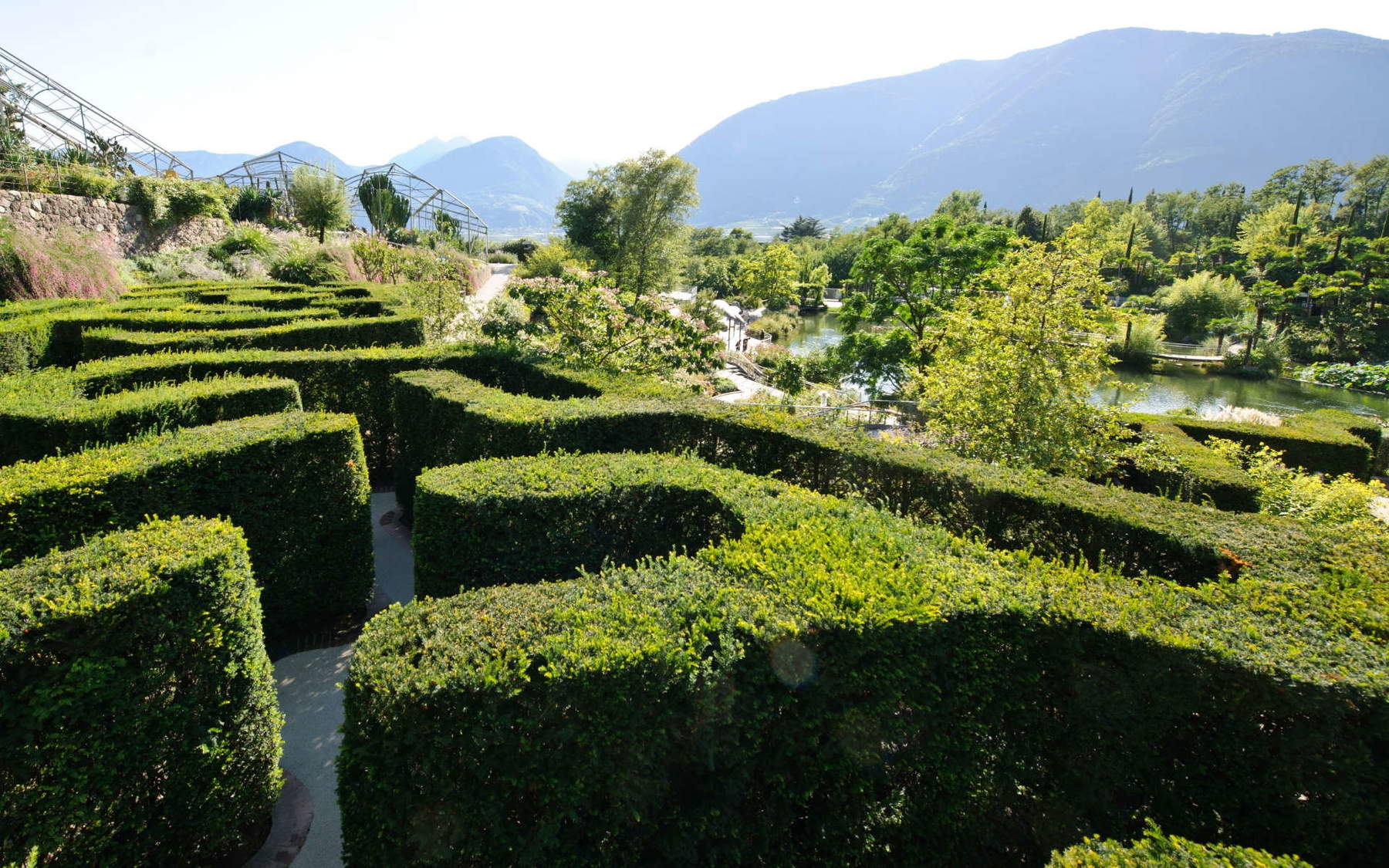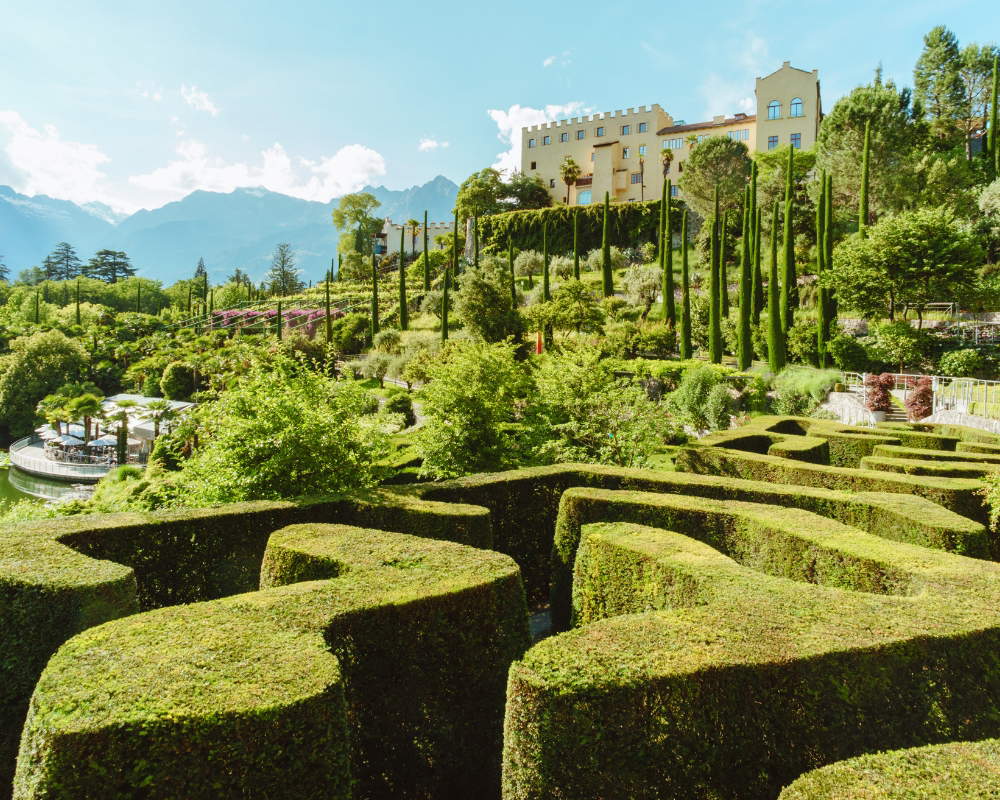The labyrinth, it is known, is a symbol rich in meaning and suggestion, a journey both physical and metaphorical through the depths of the human soul.This is also the case in Merano, where since 2001 the local Trauttmansdorff Castle has been home to an elegant yew hedge labyrinth that embodies the complexity but also the fun associated with this ancient symbol. The labyrinth, with its inherent complexity and mystery, can also become a pressing topical issue especially as it evokes the indecipherabilities and fragilities of our time. Its meaning, widely discussed and interpreted across modern languages and cultures, manifests itself through a variety of important synonyms and reflects its enigmatic and ambivalent nature by becoming both a symbol of journey and path, as well as a space of bewilderment and inner search, and by ceaselessly continuing to stimulate profound reflections on human essence and the challenges of existence.
The weave of a labyrinth thus represents not only a physical path, but also a symbolic journey toward understanding and enlightenment that, through its weaves and passages, challenges human beings to confront the ambiguity of their being, navigating between light and shadow, certainty and uncertainty. It embodies, almost magically, the eternal tension between the one and the many, between knowledge and the unknown, inviting those who venture there to explore the deepest recesses of their soul.
And it is in this context that it becomes a powerful metaphor for the mystery of everyday life: it is an inner journey that requires courage, awareness and acceptance of all that seems unknown. The mythological and emblematic image of the Minotaur, to which the labyrinth is always closely related, would seem to symbolize that elusive part of ourselves that is so often concealed, that disturbing shadow of hidden possibilities that simply begs to be accepted. According to Jung, who had spoken extensively about archetypes in his studies, the shadow represents just such an inextricable part of our psyche, a narrow doorway leading to the deep wellspring of the unconscious, but it is only by embracing this unsettling part of ourselves that we can hope to discover the truth hidden within, opening the chink to deeper knowledge and awareness.


 The labyrinth of
The labyrinth of The labyrinth of
The labyrinth ofThe labyrinth of Trauttmansdorff Castle, opened along with its gardens in 2001, embodies that typical all-European ability to reinvent spaces with fascinating artistic paths.Despite its small size, Merano’s labyrinth is a small masterpiece, wrapped in an atmosphere of restraint and taste, whose sinuous hedge lines and compact foliage create a setting that contrasts, without ever jarring, with the backdrop of the Alps. A small masterpiece whose forms wedge perfectly between the terracing of the castle gardens, which wrap around a gentle slope. It was thanks to Empress Sissi’s stay at Trauttmansdorff and the speedy recovery of her daughter Marie Valerie, who was in a precarious state of health, that the town of Merano gained a worldwide reputation as a health resort, and its castle quickly became a coveted residence frequented by nobles and the wealthy of all kinds. In 1889, eighteen years after her first stay at Trauttmansdorff Castle and six months after the death of her son Rudolf, Empress Sissi gave the order to book the castle again for another stay: the reason for this return to the spa town lay in “memories of happier times,” as she herself wrote. And so the empress returned, trying to cling to those unique sweet memories.It is said that the labyrinth was also strongly loved by the princess precisely because of the unique natural spectacle it concealed, ranging from the amphitheater full of tropical plants to the majestic mountain peaks in the background.
Thebotanical area is now divided by climatic environments that recreate the distinctive characteristics of various parts of the world. Thanks to the area’s microclimate, it is possible to immerse oneself in an African, Mediterranean, and South Tyrolean setting all in the same place, embarking on a botanical journey around the world, where plants and flowers from different parts of the globe can be found within a short distance of each other. What makes the Merano Gardens so special is precisely the fact that it is not simply a collection of plants, but entire landscape and climate ecosystems carefully recreated with more than 80 botanical areas and a variety of thematic gardens, including art pavilions and sensory stations. Once you get to the center of the labyrinth, however, you discover a mighty pomegranate tree where, according to tradition, lovers are supposed to meet by taking different paths and seal their love forever.
 |
| The labyrinth of Trauttmansdorff Castle: a green maze at the foot of the Alps |
Warning: the translation into English of the original Italian article was created using automatic tools. We undertake to review all articles, but we do not guarantee the total absence of inaccuracies in the translation due to the program. You can find the original by clicking on the ITA button. If you find any mistake,please contact us.